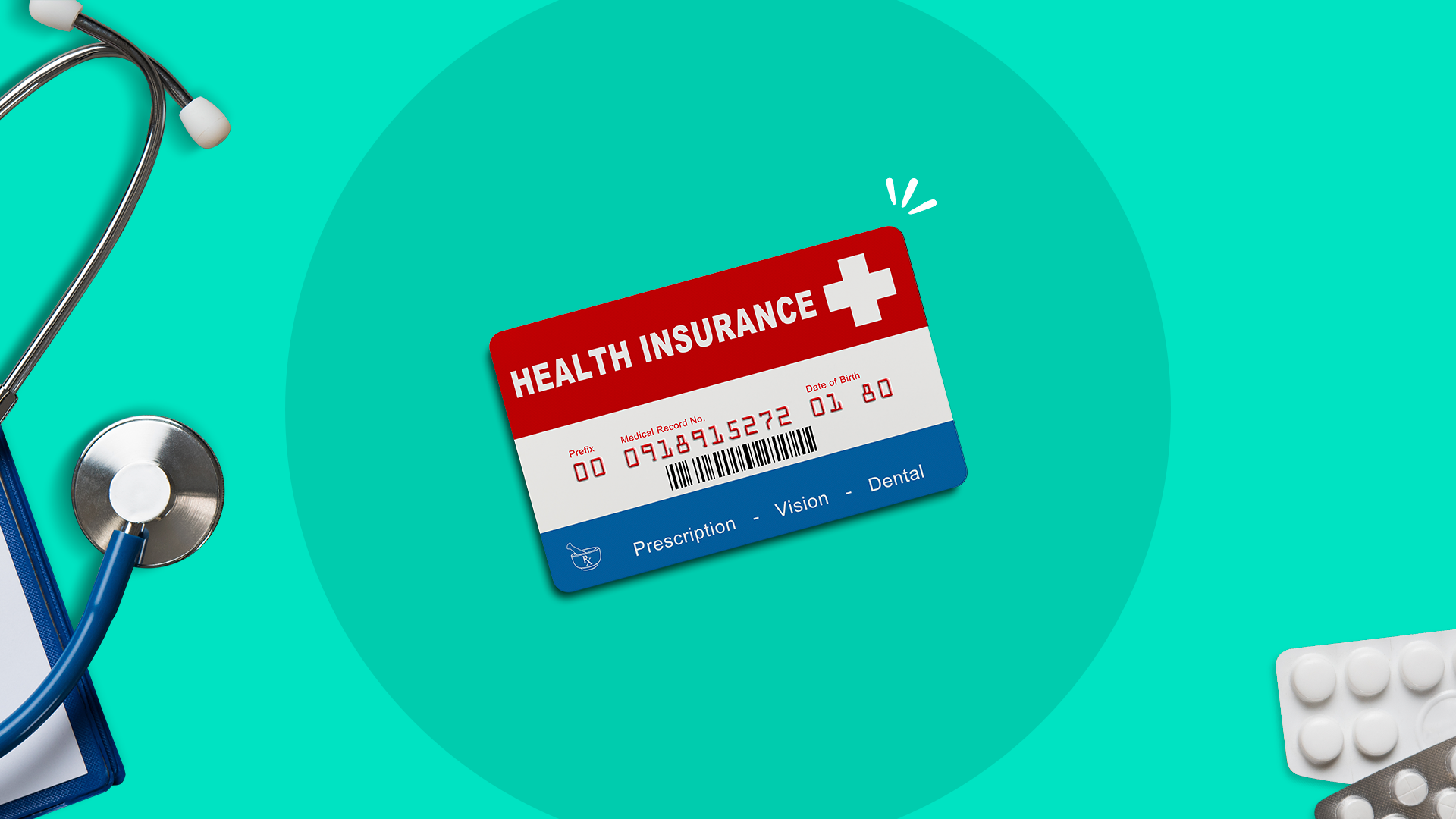

Featured
What Is An EPO Health Care Plan
Modified: January 2, 2024
Learn more about the featured EPO health care plan, including its benefits, coverage options, and how it differs from other insurance plans.
Introduction
Welcome to the world of health insurance! With so many different types of plans available, it can be overwhelming to navigate through the options and find the right one for you. One type of health care plan that you may come across is an EPO, or Exclusive Provider Organization, plan. In this article, we will explore what an EPO health care plan is, how it works, its benefits and drawbacks, and how it compares to other health insurance plans.
An Exclusive Provider Organization (EPO) health care plan is a type of managed care plan that offers a network of healthcare providers to its members. Unlike other types of health insurance plans, such as HMOs or PPOs, EPO plans do not provide coverage for out-of-network care, except in emergency situations.
When you enroll in an EPO plan, you will have access to a network of doctors, hospitals, and other healthcare providers who have agreed to provide services at discounted rates negotiated by the insurance company. This network is referred to as the “exclusive provider” network, and you can only receive full coverage for care from providers within the network.
Definition of EPO Health Care Plan
An EPO, or Exclusive Provider Organization, health care plan is a type of managed care plan that offers a network of healthcare providers to its members. It is similar to an Health Maintenance Organization (HMO) plan in that it requires you to choose a primary care physician (PCP) and receive a referral from your PCP to see a specialist. However, unlike an HMO, an EPO plan does not provide coverage for out-of-network care, except in emergency situations.
With an EPO plan, you have the flexibility to choose any healthcare provider within the network as your primary care physician. This means you can see a specialist without having to get a referral from your PCP, as long as the specialist is part of the network. If you choose to see a provider outside of the network, you will generally have to pay the full cost of the services.
EPO plans typically offer a wide range of healthcare services, including preventive care, hospitalization, prescription drugs, and specialty care. The coverage and benefits provided by an EPO plan can vary depending on the insurance company and the specific plan you choose.
It is important to note that an EPO plan may have certain restrictions and limitations. For example, some plans may require you to choose a primary care physician from a specific network or geographic area. Others may have limitations on certain treatments or procedures, or they may require prior authorization for certain services.
Overall, an EPO health care plan provides comprehensive coverage within the network of providers, giving you access to a wide range of healthcare services. However, it is crucial to carefully review the details of the plan and understand the limitations before enrolling to ensure that it meets your specific healthcare needs.
How Does an EPO Health Care Plan Work?
An EPO, or Exclusive Provider Organization, health care plan operates by providing access to a network of healthcare providers who have agreed to offer services at negotiated rates. Here’s a breakdown of how an EPO plan works:
- Choosing a primary care physician (PCP): When you enroll in an EPO plan, you will typically need to select a primary care physician from within the network. Your PCP will be your main point of contact for any non-emergency healthcare needs. They will coordinate your care, manage your health records, and refer you to specialist services if necessary.
- Utilizing the network: With an EPO plan, you gain access to a network of doctors, hospitals, specialists, and other healthcare providers who have agreed to work with the insurance company. When seeking healthcare services, it’s important to ensure that the provider you choose is within the network to receive maximum coverage.
- Referrals and specialists: In most cases, EPO plans do not require you to obtain a referral from your PCP to see a specialist within the network. This offers more flexibility compared to other managed care plans like HMOs. However, it’s important to check with your specific EPO plan, as some may still require a referral for certain specialized services.
- Out-of-network coverage: Unlike other plans that may offer limited coverage for out-of-network care, EPO plans typically do not provide coverage for services obtained outside the network, except in emergency situations. If you choose to receive care from a provider who is not in the network without an eligible emergency, you will likely need to pay the full cost of the services.
- Coverage and benefits: EPO plans generally provide coverage for a wide range of healthcare services, including preventive care, hospitalization, prescription medications, and specialty care within the network. The specific coverage and benefits offered can vary depending on the insurance company and the plan you select.
- Costs and deductibles: Like any health insurance plan, an EPO plan will have costs associated with it. These may include monthly premiums, copayments or coinsurance for visits and prescriptions, and deductibles that must be met before certain services are covered. It’s important to review and understand the costs associated with an EPO plan before enrolling.
By understanding how an EPO health care plan operates, you can make informed decisions about your healthcare and maximize the benefits offered by the plan.
Benefits of an EPO Health Care Plan
An EPO, or Exclusive Provider Organization, health care plan offers several benefits to its members. Here are some of the key advantages of enrolling in an EPO plan:
- Cost-effective: EPO plans typically offer lower monthly premiums compared to other types of health insurance plans, such as PPOs or indemnity plans. This can make them an affordable option for individuals and families looking for comprehensive coverage.
- Network of providers: With an EPO plan, you have access to a network of healthcare providers who have agreed to provide services at negotiated rates. This can give you peace of mind, knowing that you have a network of trusted medical professionals available to you for various healthcare needs.
- No need for referrals: Unlike HMO plans, EPO plans generally allow you to visit specialists directly without needing a referral from your primary care physician. This gives you the freedom to seek specialized care when necessary, without having to go through additional steps.
- Coverage for various services: EPO plans typically offer coverage for a wide range of healthcare services, including preventive care, hospitalization, emergency care, diagnostic tests, prescription medications, and some specialty care. This can provide you with comprehensive coverage for your medical needs.
- Coordinated care: By selecting a primary care physician within the EPO network, you benefit from coordinated care. Your PCP will serve as your main point of contact for ongoing healthcare management and can refer you to appropriate specialists as needed. This can result in more streamlined and comprehensive healthcare services.
- Focus on preventive care: EPO plans often emphasize preventive care services, such as routine check-ups, vaccinations, and screenings. This focus on preventive care can help detect potential health issues earlier, leading to better health outcomes and potentially lowering long-term healthcare costs.
- Potential cost savings: By using services within the EPO network, you can take advantage of negotiated rates, which can help reduce your out-of-pocket expenses. Additionally, since EPO plans typically do not provide coverage for out-of-network services except in emergencies, this can help prevent unexpected, high medical bills.
By understanding the benefits of an EPO health care plan, you can evaluate whether it aligns with your healthcare needs and make an informed decision during the enrollment process.
Drawbacks of an EPO Health Care Plan
While an Exclusive Provider Organization (EPO) health care plan offers several advantages, it’s important to consider the potential drawbacks before enrolling. Here are some of the key limitations and drawbacks associated with EPO plans:
- Network limitations: The primary disadvantage of an EPO plan is the limited network of providers. Unlike a Preferred Provider Organization (PPO) plan, an EPO plan does not provide coverage for out-of-network services, except in emergency situations. This means that if you prefer to receive care from a provider who is not within the network, you would need to pay for the services out of pocket.
- Lack of flexibility: With an EPO plan, you are typically required to select a primary care physician (PCP) within the network. While this allows for coordinated care, it can limit your options and restrict your ability to see certain providers or specialists who may not be part of the network. If you have a strong preference for specific providers or specialists, an EPO plan may not be the best fit for you.
- Referral requirement for some services: While EPO plans generally do not require a referral from your PCP to see a specialist, there may still be certain specialized services that require prior authorization or a referral. It’s important to review the specific plan guidelines to understand any restrictions or additional steps required for accessing certain healthcare services.
- Limited coverage for out-of-network care: As mentioned earlier, EPO plans typically do not offer coverage for out-of-network services, with the exception of emergencies. This lack of coverage can be a significant drawback if you need to see a specialist or receive specialized care that is not available within the network. It is crucial to consider your healthcare needs and the availability of specialists within the network before enrolling in an EPO plan.
- Potential for higher out-of-pocket costs: While EPO plans may offer lower monthly premiums compared to other types of plans, you may still be responsible for copayments, coinsurance, and deductibles. Depending on the specific plan, these out-of-pocket costs can add up, particularly if you require frequent medical services or specialized care.
- Geographical limitations: EPO plans may have network restrictions based on specific geographic regions or areas. This can limit access to certain providers if you live or travel outside of the designated network coverage area. Before enrolling, it is important to ensure that the EPO network includes healthcare providers in your desired locations.
By being aware of the drawbacks associated with an EPO health care plan, you can make an informed decision about whether it meets your healthcare needs and aligns with your preferences and circumstances.
EPO Health Care Plan vs. Other Health Insurance Plans
When it comes to choosing a health insurance plan, it’s important to understand the differences between different types of plans to make an informed decision. Here, we will compare an EPO, or Exclusive Provider Organization, health care plan with other common types of health insurance plans:
- EPO vs. HMO: Like an HMO (Health Maintenance Organization) plan, an EPO plan requires you to choose a primary care physician (PCP) within the network. The main difference is that EPO plans generally allow you to visit specialists without obtaining a referral from your PCP, whereas HMO plans typically require a referral. Additionally, EPO plans do not provide coverage for out-of-network care, while HMO plans may have limited coverage for out-of-network services with higher out-of-pocket costs.
- EPO vs. PPO: Compared to a Preferred Provider Organization (PPO) plan, EPO plans typically have a more limited network of providers. This means that there are fewer choices for care outside the network, and there is generally no coverage for out-of-network services, except in emergencies. PPO plans, on the other hand, offer a larger network of providers and some coverage for out-of-network care, albeit with higher out-of-pocket costs.
- EPO vs. Indemnity plan: An EPO plan is a type of managed care plan, while an indemnity plan, also known as a fee-for-service plan, allows you to choose any healthcare provider and does not require you to stay within a network. With an indemnity plan, you generally have more freedom in choosing providers, but you may have higher out-of-pocket costs and may need to submit claims for reimbursement. EPO plans provide a network of providers and offer negotiated rates, providing more cost certainty but with fewer provider choices.
- EPO vs. POS: A Point of Service (POS) plan combines features of HMO and PPO plans. Like an EPO, a POS plan typically requires you to select a primary care physician within the network. However, POS plans provide some coverage for out-of-network care, allowing greater flexibility compared to EPO plans. With a POS plan, you have the option to see specialists both within and outside the network, but you may have higher out-of-pocket costs for out-of-network services.
- EPO vs. High Deductible Health Plan (HDHP): A High Deductible Health Plan is a type of insurance plan with a higher deductible and lower monthly premiums. While EPO plans may have lower deductibles compared to HDHPs, they also offer a more restricted network of providers. HDHPs, on the other hand, typically offer a larger network of providers but require you to meet a higher deductible before coverage kicks in.
Understanding the differences between an EPO health care plan and other types of health insurance plans can help you determine which plan aligns best with your healthcare needs, preferences, and budget.
How to Enroll in an EPO Health Care Plan
If you have decided that an Exclusive Provider Organization (EPO) health care plan is the right choice for you, here is a step-by-step guide on how to enroll:
- Research and compare plans: Start by researching different insurance companies that offer EPO plans in your area. Compare the coverage, network of providers, costs, and benefits of each plan to find the best fit for your healthcare needs and budget.
- Contact the insurance company: Once you have a good understanding of the EPO plans available, reach out to the insurance company’s customer service or sales department to inquire about enrollment. They can provide you with more detailed information about the specific plan you are interested in and guide you through the enrollment process.
- Enrollment period: EPO plans, like other health insurance plans, typically have an annual open enrollment period during which you can sign up for coverage. This is usually in the late fall, but the specific dates may vary depending on the insurance company. It’s important to be aware of the open enrollment period and submit your application within that timeframe.
- Application process: To enroll in an EPO plan, you will need to complete an application form provided by the insurance company. The application will typically require personal information, such as your name, address, date of birth, and Social Security number. You may also need to provide information about your current healthcare coverage, if applicable.
- Network provider selection: During the enrollment process, you may be asked to select a primary care physician (PCP) from the EPO network. Take some time to research and choose a PCP who meets your healthcare preferences and needs. This step is essential as your PCP will oversee your care and coordinate any necessary referrals to specialists.
- Pay the premium: Once your application is approved and you have selected a PCP, you will need to pay the premium for your EPO health care plan. The premium is the amount you pay on a regular basis (usually monthly) to maintain your health insurance coverage. The insurance company will provide details on how to make the payment.
- Receive plan materials: After enrolling and paying the premium, the insurance company will provide you with the necessary plan materials, including your member ID card, a comprehensive plan summary, and details about the coverage and benefits of your EPO plan. Keep these materials in a safe place for future reference.
By following these steps, you can successfully enroll in an EPO health care plan and gain access to comprehensive, network-based healthcare coverage for your needs.
Conclusion
Choosing the right health insurance plan is a crucial decision that can affect your overall well-being and financial security. Exclusive Provider Organization (EPO) health care plans offer a unique blend of network-based coverage and cost-effectiveness. By understanding how EPO plans work and comparing them to other types of insurance plans, you can make an informed decision about your healthcare coverage.
EPO plans provide access to a network of healthcare providers who have agreed to offer services at negotiated rates. With an EPO plan, you typically do not need a referral to see a specialist within the network, offering greater flexibility compared to HMO plans. However, it’s important to note that EPO plans do not provide coverage for out-of-network services, except in emergencies. This limitation may impact your choice of providers and access to specialized care.
Despite the limitations, EPO health care plans offer many benefits, such as lower monthly premiums, coordinated care through a primary care physician, coverage for various healthcare services, and a focus on preventive care. Evaluating your healthcare needs, budget, and provider preferences will help you determine if an EPO plan is the right fit for you.
When enrolling in an EPO plan, take the time to research different insurance companies, understand the network of providers, and compare the coverage and costs of each plan. Be mindful of the open enrollment period and complete the application process accurately. Once enrolled, review the plan materials provided by the insurance company to fully understand your coverage details and benefits.
Ultimately, the key to maximizing the benefits of an EPO health care plan is to utilize the network of providers, stay informed about the plan’s coverage limitations, and actively engage in preventive care. By doing so, you can enjoy comprehensive healthcare coverage and peace of mind knowing that you have access to quality healthcare services within the network.









